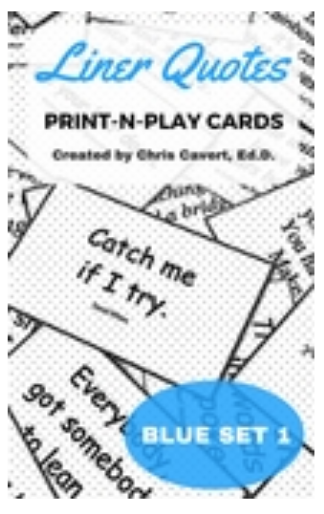
Without Playing Cards I'm thinking you want a good size group for this one - 20 to 30 (or more). You also want some game spots made from that foamy cupboard liner material you can cut into squares or circles - at least two colors (more colors would even be better). (Now, if you have poly spots in multiple colors they would work too.) Set out the game spots as show in the diagram - one per player - and then ask all the players to stand on a spot. You're ready to play.
The basic idea is that you (the facilitator) will call out different switches the players are asked to make - challenge each player to make as many switches as possible (there might be some switches that all players cannot make). Players are not allowed to move until everyone is ready and they are only allowed to switch (spots) one time after the criteria is called. So, one of the challenges to solve in Switching Places is to create a tool that can be used to determine when all players are ready. This activity will also require most players to talk in order to connect with the person or people they need to switch with - offering an opportunity to connect with a variety of players during the activity. Here are some possible switch ideas. Switch with someone...
- Next to you.
- That is not next to you.
- Approximately your same height.
- That has a letter in their first name that you have in your first name.
- That has the same odd/even birthday (day) as you do.
- That has something in common with you.
- Standing on a different color. (Might not allow all to switch)
- That was born in the same month as you. (Might not allow all to switch)
- That is the same "handed" as you - righty or lefty. (All can switch if they are helpful)
- That is wearing the same kind of foot ware as you are wearing. (Might not allow all to switch)
With Playing Cards If you deal out one playing card to each person you now have a number of different switching options to choose from. Switch with someone...
- That is holding the same color as you.
- That is holding of different color than you are holding.
- That is the same even/odd as you (Do the Face Cards get to switch?)
- Who is one card away from you in rank - up or down.
- Holding a face card. (Might not allow all to switch)
- Holding an even numbered card. (Might not allow all to switch)
- Holding an odd numbered card. (Might not allow all to switch)
From this activity I am envisioning some interesting dynamics. Will the assertive players allow the less assertive players into the game? (Especially when not all can switch.) Who is showing helpful behaviors? Who gives up their switch to someone else? How does it feel when you are not able to switch and do others in the group realize you are not able to switch? (Or, are they only thinking about themselves?) What tool does the group devise to find out if everyone is ready to switch?
The set up for this one also allows for person's with disabilities to participate as long as they can move or be assisted to move - and who assists?
Help me work through this one. Try it out. If you come up with other ideas and switching options share them with us in the comments below. And, thanks in advance.
All the best,
Chris Cavert







 RSS Feed
RSS Feed